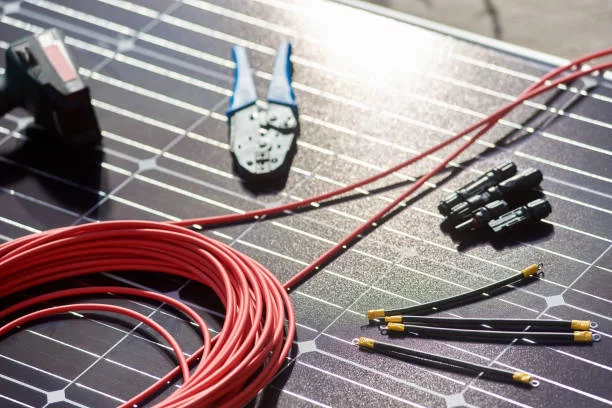What equipment shall be installed when the solar energy system is connected to the grid?
In energy storage, household or industrial and commercial solar systems are usually connected to the national grid, and it is difficult to ensure the stability and sustainability of power with off-grid operation. So, what equipment is added to the grid-connected system?
When the solar energy system is connected to the national grid, in order to ensure the stability, safety, and efficient operation of the system, some key devices need to be added. The main function of these devices is to ensure the reliable interaction between the solar system and the power grid, realize the flexible application of energy storage, and meet the technical requirements of the power grid.
Grid operation is basically dependent on a device, known as the inverter.
- Grid-connected inverter The inverter transforms the direct current from solar panels to AC compatible with the grid frequency and voltage at a point where the power delivered is seamlessly connected to the grid.
Anti-island effect protection: While the power grid is cut off, the inverter would automatically disconnect to avoid feedback of power to the power grid resulting in security risks.
The energy storage system allows battery charging and discharging functions – two-way power flow management, while MPPT improves power generation efficiency in solar panels.
2. Energy Storage Battery System
Functions
The solar power which is excess of the daily requirement can be stored for usage during peak hours or when the grid is off power.
Charge when the grid is at its lowest and discharge during peak times to optimize the costs of energy use: Peak Cutting and Valley Filling.
Features:
Supports two-way interaction with the grid: charged from the grid or discharged into the grid, depending on demand and price strategy.
Onboard Battery Management system (BMS) : Can monitor the status of the battery to ensure the safety operation of the battery.
3. Energy Management System (EMS)
Coordinate the flow of energy between solar power, storage batteries, and the grid. Optimize system operating efficiency and reduce energy costs.
Achieve load priority management: prioritize the use of solar power generation, supplemented by energy storage, and finally use grid electricity. Provide real-time data to support users in understanding the use of electricity and optimizing energy use, remote monitoring, and data analysis. Grid response: when the grid needs it, according to the requirements of the grid to supply power or absorb excess power.
4. Grid-connected circuit breaker and protection device
Automatically detects power grid anomalies, including excessive voltage and frequency deviation, and disconnects the solar system from the power grid. This ensures the safety of the connection between the solar system and the power grid, prevents the expansion of faults or equipment damage, and provides short-circuit protection, overload protection, and overvoltage protection.
5. Bidirectional meter (Smart meter)
Measure the amount of electricity that the solar system outputs to the grid, and the amount of electricity that comes in from the grid. Support Net Metering or Time-of-Use Pricing. Provide accurate data for electricity bill settlement or policy subsidy calculation.
6. Power grid interface equipment (like interface protection devices)
Ensure the system is interacting with the grid according to the technical requirements of the state and the power company. Test the parameters of the grid-voltage, frequency, power factor-to make sure the grid connection condition meets the requirements. Prevent power backflow when the grid fails.
7. Anti-reflux device (optional)
Prevent the power from feeding back into the grid accidentally, especially if the grid does not support power feedback. It is commonly used in scenarios where bidirectional power flow is not allowed, such as policy requirements in some areas.
The operation of the grid-connected system can make up for the shortcomings and advantages of off-grid operation, and the grid as a backup power supply can make up for the intermittency problem of solar power generation. Solar power generation is prioritized for self-use, with excess power stored or sold to the grid to maximize revenue. Use EMS to optimize energy utilization strategies and minimize electricity cost.
In summary, the grid-connected solar energy storage systems for family or industrial and commercial use generally add such equipment as grid-connected inverters, energy storage battery systems, energy management systems, protection devices, and smart meters. All these devices together not only improve the utilization of solar energy but also ensure safety and stability in the operation of the system, offering users and the grid flexible and efficient power solutions.

